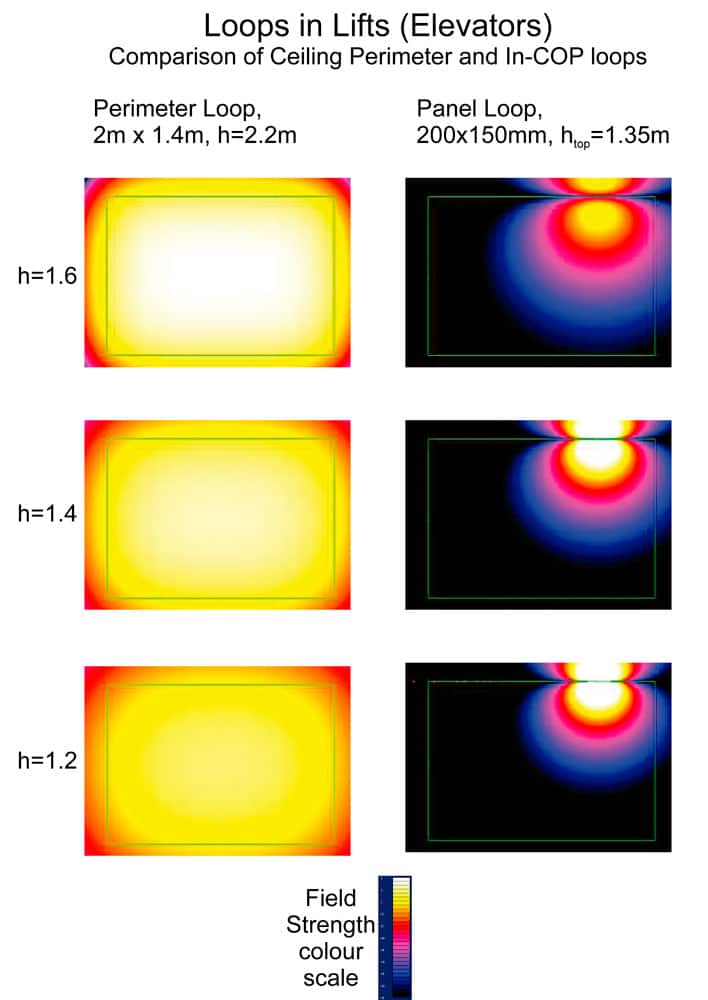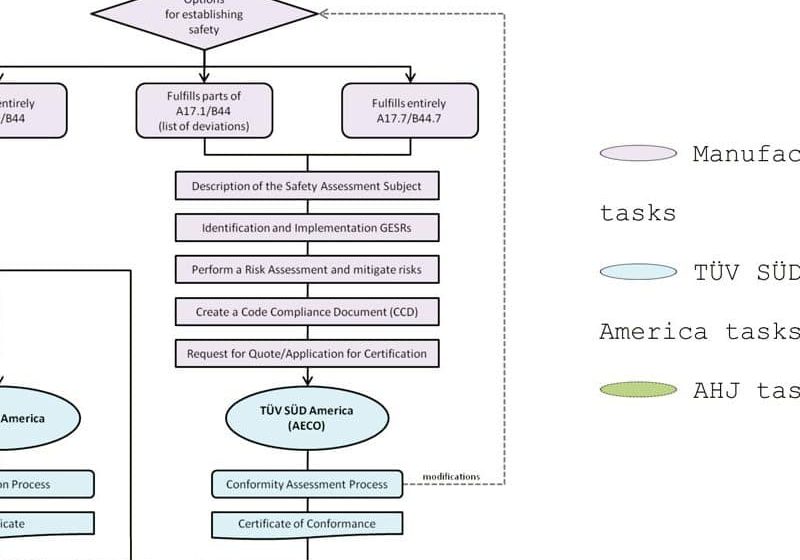Induction Loops That Only Mimic the Performance of a Hearing Aid are Never Inexpensive, but Always a Waste of Money
Aug 1, 2011

In a rush to satisfy the latest amendment to the EN 81-70 standard on lift accessibility, the industry is purchasing induction loops based on price and ease of installation without regard to user benefit.
How many times have you been at a train station and heard unclear static messages over the public ad-dress (PA) system? It used to be very common. Station operators installed PA systems with the intention of improving service and safety for their customers. Instead, they caused more frustration as people struggled to understand the messages. The problem was not necessarily poor-quality PA equipment; it was more likely that no consideration of the environment in which the equipment was being installed had been given. By taking a holistic approach to the procurement, design and installation of PA systems, operators are now get-ting the long overdue benefit, instead of wasting money and annoying their customers.
The lift industry is poised to make a similar mistake and throw money down the proverbial lift shaft. It is rushing to satisfy the latest amendment to the EN 81-70 standard on lift accessibility, which requires the installation of an induction loop. It is buying induction loops based on price and ease of installation without any regard to user benefit. A system that, at best, only mimics the intrinsic performance of a hearing aid is never inexpensive, but always a waste of money.
To procure a cost-effective induction-loop system for a lift, we need to take the holistic approach and consider:
- Background noise
- The functionality and limitations of the modern hearing aid
- The effect of hard reflective surfaces on intelligibility
- The effect of metal on magnetic field strength and signal quality
- The services provided by the intercom system
- Area coverage
- The induction-loop performance standard: IEC60118-4:2006
Background Noise
Have you ever tried to have a conversation in a crowded, noisy bar or nightclub with music pounding from the speakers? It is difficult, if not impossible. Depending on the level of background noise compared to the proximity, loudness and clarity of the voice you are listening to, you may be able to reject the background noise and focus on the speech that you want to hear. The hard of hearing cannot do this. Even when the background noise is relatively low, the hard of hearing struggle. For them, all the sounds stay mixed together. The hum of an air-conditioning unit, the chatter of distant shoppers or the drone of traffic are enough to prevent them from understanding any intelligible sound. They need assistive-listening solutions that will filter out the background noise and provide a high quality signal to their hearing aid.
Digital Hearing Aids
Modern hearing aids have high-performance, directional microphones built in and use sophisticated digital signal processing to help filter out background noise. While they can be effective in many situations, they are not a panacea, and other assistive listening systems are still required. This is particularly true in public spaces where background noise is truly random and unpredictable.
Lift Environment
The sound quality of some intercom systems can be very poor, making it impossible for the hard of hearing to use, but in the lift environment, even where good audio quality is delivered by the intercom, there is still a problem. The hard metallic surfaces of the lift car reflect the sound, blurring it to the point where the hard of hearing lose the intelligibility. For this reason, a microphone placed in the lift used to feed a loop system makes no sense. It will pick up this blurred sound, even if it is placed close to the intercom speaker, and mix it with any background noise, such as an emergency alarm sounding, mechanical noise from the lift, other ambient noise, etc. losing intelligibility.
The hearing-aid user is probably worse off. At least the signal processing in the hearing-aid microphone may have helped a little to reduce the effect of background noise. Once this has been bypassed by using the T-coil setting, no additional processing of the signal is applied beyond tonal correction and amplification. Neither will help with background noise. By using a direct electrical connection, line or low-impedance-level feed from the intercom to the induction loop amplifier, the background noise in the lift is completely rejected, and the reflective acoustic environment is irrelevant. The input signal to the induction-loop amplifier is free from background noise and you are halfway to delivering the benefit to the hard of hearing. Metal’s Effect on Magnetic Fields
Metal in the same plane as an induction loop will absorb the signal. This phenomenon is dependent on the conductivity of the metal and the signal frequency. The more conductive the metal and the higher the signal frequency, the greater the loss will be. The effect is to reduce the overall signal strength or volume of the signal and muffle the sound as the higher frequencies are more greatly affected. Clearly, this adversely impacts intelligibility.
The induction-loop amplifier will need to compensate for both field strength and frequency response. Different metals have different signal-loss characteristics. Stainless steel, which has a relatively high resistivity, has little effect on the magnetic signal, whereas polished mild steel will greatly attenuate the signal. For example, a loop amplifier capable of providing full area coverage of a lift with a loop mounted beneath a stainless-steel lift roof may not be powerful enough to drive a small loop behind a polished mild-steel car-operating panel, even though it is only intended to provide localized coverage.
Make sure that the loop driver has sufficient output current and metal-loss correction to compensate for the proximity effect of metal.
Area Coverage
Should the induction-loop signal provide full coverage of the lift, or is localized coverage around the intercom system adequate? The London Underground insists that full-area coverage of the lift is required – meaning that the user can be standing anywhere in the lift and receive all announcements, PA/VA and floor announcements. However, the main reason the London Underground takes this stance is that in an emergency situation, it has been known for someone to raise the alarm and, in panic, freeze. Without full-area coverage, staff would not be able to talk to the individual and calm them down.
The European Directive on disability access requires providers to offer an equal level of service to the disabled. This is just what the London Underground has set out to achieve. The loop amplifier required for local or full area coverage is often the same unit and, therefore, the same price.
The Induction-Loop Performance Standard: IEC60118-4:2006
This is the international performance standard for audio frequency-induction loop systems. It is your guarantee that the induction-loop system installed in your lift will provide a tangible benefit to the hard of hearing. The standard sets a minimum level of performance of the system with respect to magnetic-field strength uniformity over the listening plane and frequency response. In addition to these quantitative measurements, a subjective listening test for intelligibility is also required.
Conclusion
The hard of hearing struggle to understand speech mixed with background noise, even with the best digital hearing aids. The lift is a reverberant environment, and the operator has no control on the level of background noise at the point that the PA/VA, floor announcer or intercom is being used. Only an electrical feed directly from the intercom to the induction-loop amplifier can remove the background noise, meaning in-car microphone feeds make no sense. The loop amplifier needs to be designed with built-in metal-loss compensation, and full-area coverage of the lift car is implicit in the European Directive for disability access.
Finally, when procuring an induction-loop system, insist that it meets the performance standard IEC60118-4:2006. If you don’t, you may be throwing your money down the lift shaft.
Get more of Elevator World. Sign up for our free e-newsletter.








